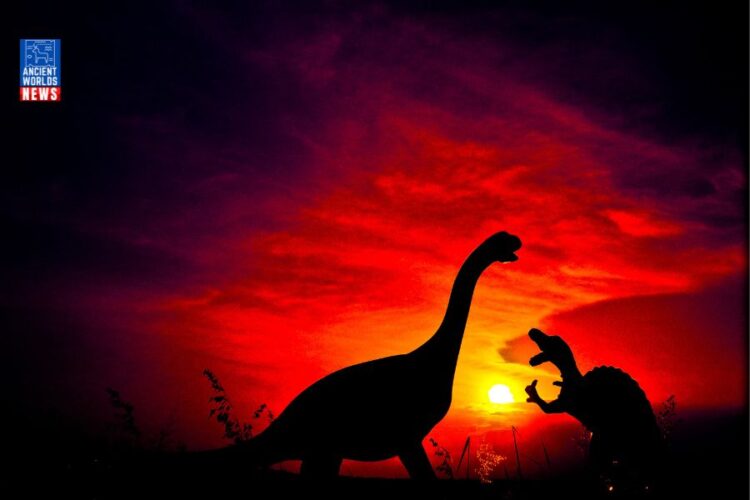The End-Triassic extinction event, also known as the Triassic-Jurassic extinction, marked a significant transition in Earth’s history approximately 201 million years ago. It was a global-scale event that resulted in the loss of a substantial number of species, including several large amphibians and reptiles. The event played a crucial role in shaping the subsequent evolution of life on our planet.

Causes of the Extinction
While the exact cause of the End-Triassic extinction event is not yet fully understood, several factors have been proposed:
Climate Change
One leading hypothesis suggests that the extinction event was triggered by intense volcanic activity associated with the breakup of the supercontinent Pangaea. This volcanic activity, known as the Central Atlantic Magmatic Province (CAMP) eruptions, released enormous amounts of greenhouse gases, such as carbon dioxide and methane, into the atmosphere. This led to a rapid global warming event, altering climates and oceanic conditions.
Global Warming and Ocean Acidification
The release of greenhouse gases during the volcanic eruptions caused a rise in global temperatures and subsequent changes in ocean chemistry. The increased carbon dioxide levels led to ocean acidification, making marine environments less habitable for many species, including those with calcium carbonate shells.
Habitat Disruption
The volcanic eruptions and associated environmental changes caused widespread disruption of habitats. The resulting fluctuations in temperature, precipitation patterns, and sea levels would have severely impacted ecosystems, leading to the decline and extinction of vulnerable species.
Reduced Oxygen Levels
The volcanic activity, combined with the warmer temperatures, may have caused a decrease in oxygen levels in both terrestrial and marine environments. This reduction in oxygen availability would have had detrimental effects on organisms dependent on oxygen for survival.
Effects on Life
The End-Triassic extinction event had significant consequences for Earth’s biodiversity:
Terrestrial Extinctions
Many groups of animals on land were severely affected. Large amphibians, such as temnospondyls, experienced a significant decline, with some groups going extinct entirely. Many reptiles, including early dinosaurs and large herbivorous archosaurs called rhynchosaurs, also suffered losses.
Marine Extinctions
The event caused substantial marine extinctions, particularly affecting groups like conodonts, cephalopods, and some marine reptiles. The decline of marine ecosystems allowed for the subsequent diversification of new groups, including marine reptiles such as ichthyosaurs and plesiosaurs.
Transitional Period
The End-Triassic extinction event marked a crucial transition period between the dominance of certain groups, such as synapsid reptiles, and the rise of new groups like dinosaurs. The extinction of many large amphibians and reptiles provided ecological opportunities for other lineages to flourish and diversify.
Ecosystem Restructuring
The extinction event caused significant restructuring of terrestrial and marine ecosystems. As dominant groups declined or disappeared, new species emerged and diversified, leading to the establishment of new ecological relationships.
Lessons Learned:
Studying the End-Triassic extinction event provides valuable insights into the interconnectedness of geological events, climate change, and biological responses. It highlights the vulnerability of species to environmental perturbations and the subsequent restructuring of ecosystems. Understanding the causes and consequences of past extinction events aids in our comprehension of present-day ecological changes and assists in the development of conservation strategies to protect Earth’s biodiversity in the face of ongoing environmental challenges.

